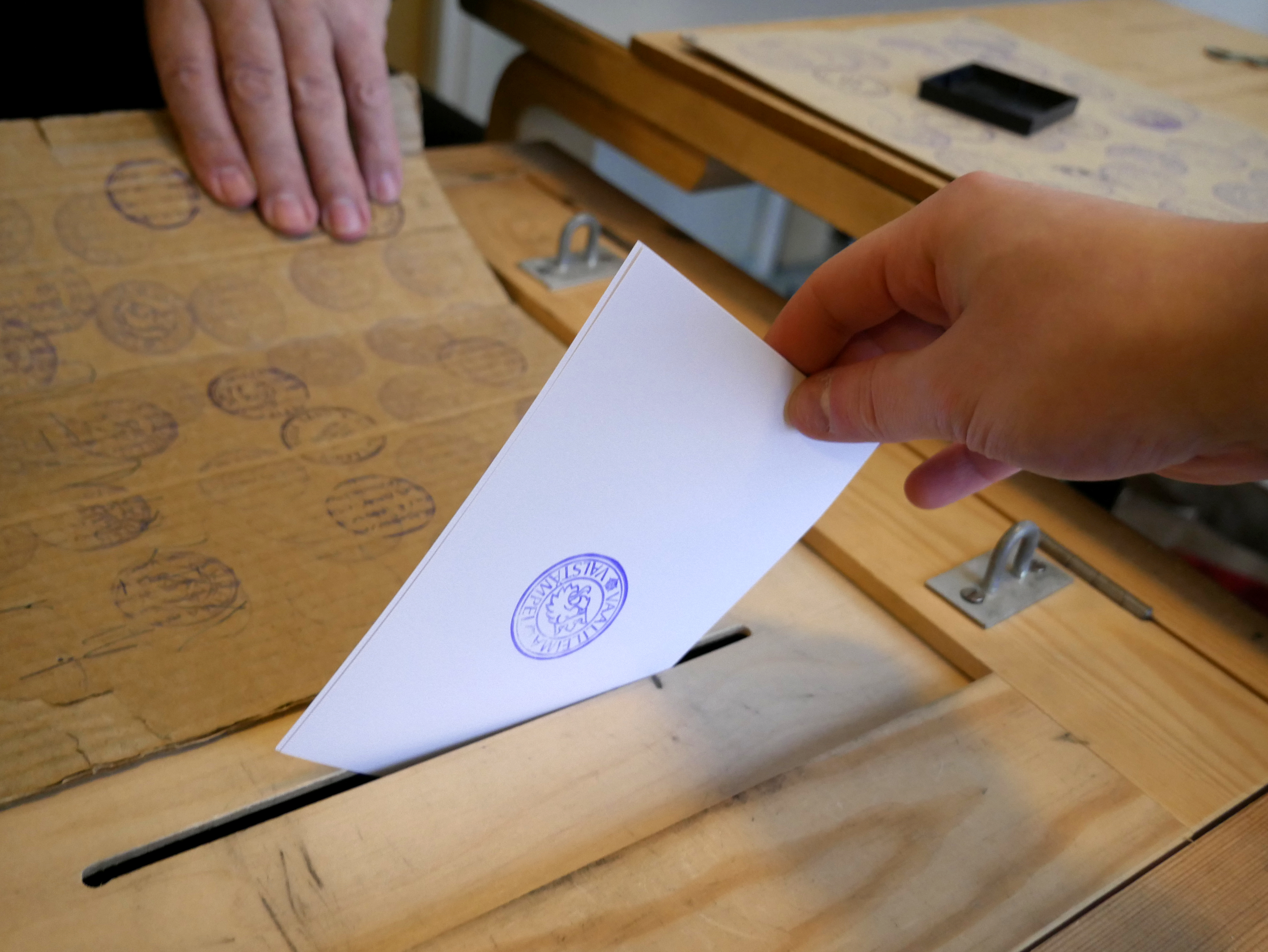|
Keijo Liinamaa
Keijo Antero Liinamaa (6 April 1929 in Mänttä – 28 June 1980 in Helsinki) was a Finnish lawyer and politician who served as caretaker Prime Minister of Finland from June to November 1975. Liinamaa, a lawyer specialising in labour law, began his career working for the Finnish Central Union of Trade Unions ( SAK). In 1958, at only age 29, he became the town manager of Mänttä, an industrial municipality in Western Finland. Upon the creation of a nationwide labour dispute conciliation mechanism in the early 1960s, Liinamaa was appointed a regional labour dispute conciliator. In 1965 he became the National Labour Dispute Conciliator and held the post in 1965–1970 and 1979–1980. In 1965–1967 due to turbulent economic winds, Liinamaa was faced with conciling dozens of labour disputes. In his capacity as the National Conciliator of Finland, he was able to prevent several major strikes. In 1967 Liinamaa was given a special task by Prime Minister Rafael Paasio: L ... [...More Info...] [...Related Items...] OR: [Wikipedia] [Google] [Baidu] |
Prime Minister Of Finland
The prime minister of Finland ( fi, Suomen pääministeri; ) is the leader of the Finnish Government. The prime minister and their cabinet exercise executive authority in the state. The prime minister is formally ranked third in the protocol after the president of Finland and the speaker of the Parliament. Finland's first prime minister, Pehr Evind Svinhufvud (also later the 3rd president of the Finland), was appointed on 27 November 1917, just a few days before the country declared independence from Russia. The incumbent prime minister is Sanna Marin of the Social Democratic Party. Marin was sworn in on 10 December 2019 and at 34, she became the world's youngest serving state leader and the youngest prime minister in Finland's history. History In 1918, the Senate of Finland was transformed into the Government of Finland, and the position of vice-chairman of the Economic Division was transformed into that of the prime minister. Kesäranta, located in the westerly Mei ... [...More Info...] [...Related Items...] OR: [Wikipedia] [Google] [Baidu] |
Central Organisation Of Finnish Trade Unions
The Central Organisation of Finnish Trade Unions, usually referred to by the acronym SAK ( fi, Suomen Ammattiliittojen Keskusjärjestö; sv, Finlands Fackförbunds Centralorganisation, FFC) is the largest trade union confederation in Finland. Its member organisations have a total of more than one million members, which makes up about one fifth of the country's population. History The other two Finnish trade unions confederations are the Finnish Confederation of Salaried Employees (STTK) and the Confederation of Unions for Academic Professionals in Finland (AKAVA). The most important negotiating partner of SAK is the ''Elinkeinoelämän keskusliitto/Finlands Näringsliv'' (the Confederation of Finnish Industries, EK), which represents the majority of Finnish employers. The current SAK was founded in 1969 as the Finnish Federation of Trade Unions (SAK 1930–1969), controlled by SKDL and TPSL, and the Finnish Trade Union Federation (SAJ 1960–1969), controlled by SDP, settled t ... [...More Info...] [...Related Items...] OR: [Wikipedia] [Google] [Baidu] |
Liinamaa Cabinet
Keijo Liinamaa's cabinet was the 57th government of Finland. The cabinet existed for 171 days, lasting from 13 June 1975 to 30 November 1975. The Liinamaa cabinet was a caretaker government (Finnish: ''virkamieshallitus'') drawn by President Urho Kekkonen. Due to this government having been instituted by the President, the government included no politically affiliated parties, consisting instead only of government employees. The cabinet’s Prime Minister was Keijo Liinamaa Keijo Antero Liinamaa (6 April 1929 in Mänttä – 28 June 1980 in Helsinki) was a Finnish lawyer and politician who served as caretaker Prime Minister of Finland from June to November 1975. Liinamaa, a lawyer specialising in labour law, .... Ministers References {{Reflist Liinamaa 1975 establishments in Finland 1975 disestablishments in Finland Cabinets established in 1975 Cabinets disestablished in 1975 ... [...More Info...] [...Related Items...] OR: [Wikipedia] [Google] [Baidu] |
Minister Of Labor (Finland)
The Minister of Employment (, ) is one of the Finnish Government's ministerial positions. Along with the Minister of Economic Affairs, the Minister of Employment is located at the Ministry of Economic Affairs and Employment. List of Ministers of Labor and Employment References {{Reflist Employment Employment is a relationship between two parties regulating the provision of paid labour services. Usually based on a contract, one party, the employer, which might be a corporation, a not-for-profit organization, a co-operative, or any othe ... Ministers of Labour of Finland ... [...More Info...] [...Related Items...] OR: [Wikipedia] [Google] [Baidu] |
Ahti Karjalainen
Ahti Kalle Samuli Karjalainen (10 February 1923 – 7 September 1990) was a Finnish politician. He was a member of the Agrarian League (later known as Keskusta, Centre Party) and served two terms as Prime Minister of Finland. He is, however, better known for his period as Minister of Foreign Affairs of Finland. Karjalainen is considered one of the most influential figures in post-war Finnish politics. Like President Urho Kekkonen, Karjalainen attached great importance to Finland's relationship with the Soviet Union. Karjalainen served as the Minister of the Treasury, Minister of Foreign Affairs and Minister of Trade and Industry for half a decade from 1957, forming his first government on 13 April 1962. It remained in office until December the following year; ultimately disbanding due to the resignations of ministers sympathetic to the SAK over economic and political issues. Karjalainen served a second term as prime minister from 15 July 1970 to 29 October 1971. Karjalainen's mi ... [...More Info...] [...Related Items...] OR: [Wikipedia] [Google] [Baidu] |
Presidents Of Finland
The president of the Republic of Finland ( fi, Suomen tasavallan presidentti; sv, Republiken Finlands president) is the head of state of Finland. Under the Constitution of Finland, executive power is vested in the Finnish Government and the president, with the latter possessing only residual powers. The president is directly elected by universal suffrage for a term of six years. Since 1994, no president may be elected for more than two consecutive terms. The president must be a natural-born Finnish citizen. The presidential office was established in the Constitution Act of 1919. The incumbent president is Sauli Niinistö. He was elected for the first time in 2012 and was re-elected in 2018. Finland has, for most of its independence, had a semi-presidential system in which the president had much authority and power over both foreign and domestic policy, but in the late 20th and early 21st centuries, the powers of the president have been subject to decrease, moving the coun ... [...More Info...] [...Related Items...] OR: [Wikipedia] [Google] [Baidu] |
Cabinet (government)
A cabinet is a body of high-ranking state officials, typically consisting of the executive branch's top leaders. Members of a cabinet are usually called cabinet ministers or secretaries. The function of a cabinet varies: in some countries, it is a collegiate decision-making body with collective responsibility, while in others it may function either as a purely advisory body or an assisting institution to a decision-making head of state or head of government. Cabinets are typically the body responsible for the day-to-day management of the government and response to sudden events, whereas the legislative and judicial branches work in a measured pace, in sessions according to lengthy procedures. In some countries, particularly those that use a parliamentary system (e.g., the UK), the Cabinet collectively decides the government's direction, especially in regard to legislation passed by the parliament. In countries with a presidential system, such as the United States, the Ca ... [...More Info...] [...Related Items...] OR: [Wikipedia] [Google] [Baidu] |
Elections In Finland
There are four types of elections in Finland. Each Finnish citizen at least 18 years of age has the right to vote in each of the elections, which decide the following: the president, the parliament, the MEPs, and the municipal and city councils. Finland has a presidential election every six years, in which a President of Finland is elected in two rounds on the basis of a direct popular vote. Parliamentary elections are held every four years with a system of proportional representation in multiple seat constituencies. Finnish parliamentary elections use the D'Hondt method. Finland has a multi-party system wherein it is uncommon for a single party to achieve a majority in eduskunta; thus most Finnish governments consist of coalitions. European Parliament elections are held every five years. Finland has 14 seats in the European Parliament. Municipal elections are held every four years. Municipal elections are held separately in the Municipalities of Åland at the same time as ... [...More Info...] [...Related Items...] OR: [Wikipedia] [Google] [Baidu] |
Political Parties In Finland
This article is a list of political parties in Finland, which includes Finland's national-level political parties and excludes local and provincial parties (such as the parties of Åland). A party is defined as a political association whose existence is recorded in the Ministry of Justice's party register. Finland has a multi-party system. Coalition governments which comprise a majority of seats in the Parliament of Finland are the norm. Those parties which are not in government are called the opposition. Due to the lack of an electoral threshold, many parties are usually represented in Parliament. As a result, it is all but impossible for one party to win a majority. Additionally, the socialist and non-socialist blocs usually cannot win enough seats between them to form a governing coalition on their own. Most Finnish governments, particularly since World War II, have thus been grand coalitions comprising parties stretching across the political spectrum. Parties work in parlia ... [...More Info...] [...Related Items...] OR: [Wikipedia] [Google] [Baidu] |
Comprehensive Income Policy Agreement
Finnish national income policy agreements or comprehensive income policy agreements (, often called ''tupo''; ) are tripartite agreements between Finnish trade unions, employers' organizations, and the Finnish government. They are policy documents covering a wide range of economic and political issues, such as salaries, taxation, pensions, unemployment benefits, and housing costs. They represent collective bargaining taken to its logical maximum, reaching virtually all wage-earners. Their enforcement is made easier by the universal validity of collective labour agreements. However, they are voluntary agreements and are not considered government legislation, i.e. they do not represent central planning of the economy. In national income policy agreements, the government and the employees' and employers' organizations attempt to reach a common understanding of the best choices for the national economy in terms of economic growth and real wages. The basic conundrum is simple: employ ... [...More Info...] [...Related Items...] OR: [Wikipedia] [Google] [Baidu] |
Rafael Paasio
Kustaa Rafael Paasio, born Hellström (6 June 1903 – 17 March 1980) was a prominent Finnish politician and editor from Social Democratic Party. He served as Prime Minister of Finland twice. Paasio was born in Uskela and was in contact with the Social Democratic Labor movement at an early age. Paasio was elected to the parliament in 1948. Before that he participated in Turku municipal politics and was since 1942 the chief of newspaper Turun Päivälehti. Paasio was the chairman of SDP from 1963 to 1975, and served as the prime minister twice, 1966-1968 and 1972, and was also twice the Speaker of the Parliament. Both his son, Pertti Paasio, and his granddaughter, Heli Paasio, have been members of the parliament. Social Democrats remember Rafael Paasio, above all, as party unifier and strengthener. In addition, the party reached decent relations with Soviet Union during his term. Paasio positioned himself in the middle of left-wingers and right-wingers in the party. His support t ... [...More Info...] [...Related Items...] OR: [Wikipedia] [Google] [Baidu] |





